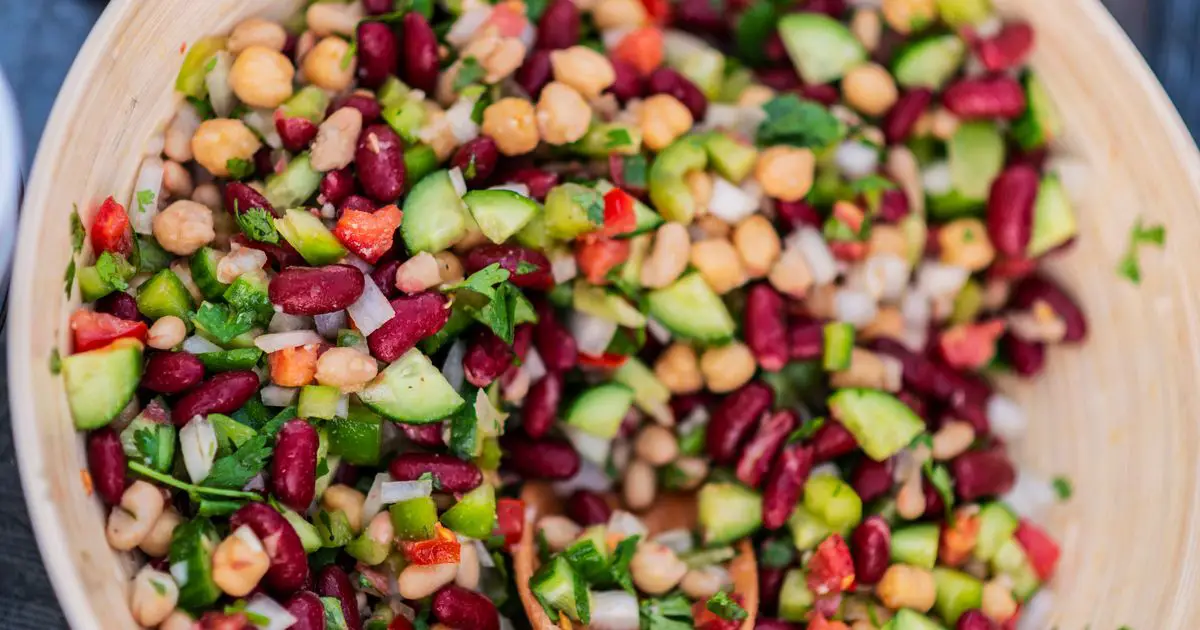
Social media tells us we should be doing a lot of things — from eating more protein (which you’re probably already eating enough of, if you eat meat) to taking colostrum supplements to help boost your metabolism (there is no proof colostrum does this). It can be hard to know what to do and what not to do for your health. But while lots of social media recommendations aren’t true, there’s one current fad that is actually healthy: eating more fibre.
Folks on TikTok and Instagram frequently share ways to add more fibre to your diet, while explaining why it’s important to do so. And experts say they’re right. As a society, Americans don’t eat enough fibre, which is not good.
Fibre is crucial for your gut health, healthy bowel movements, blood sugar control and much more. Eating enough of it can even help lower your risk of colorectal cancer.
So, how much fibre do you need in a healthy diet? “Women, between 19 and 50, it’s recommended that they get about 25 grams of fibre [per day], and then over the age of 50, about 21 grams,” said Veronica Mullins, an associate professor in the School of Nutritional Sciences and Wellness at the University of Arizona. “And men… they need 38 grams at the ages of 19 to 50, and then that goes down to about 30 grams after 50 years.”
Older adults need less fibre because they’re generally less active and lose muscle mass, “so their metabolism is lower, so their total caloric intake decreases and the amount of fibre needed deceases,” said Sara Elnakib, the chair of the Department of Family and Community Health Sciences at Rutgers University in New Jersey.
And how much fibre does the average person get? Between 10 and 15 grams each day. So, once again, not enough.
What is fibre?
Fibre comes from whole fruits and vegetables, which most people under-consume, Mullins said. Additionally, many folks turn to white flour, white bread and white rice instead of their whole-grain alternatives, and fibre is stripped when companies make these white-flour versions, said Elnakib.
“Fibre is the part of the food that we don’t normally digest, so humans can’t digest this part of the food, and so it’s often in plant-based foods,” Elnakib said.
There’s two kinds of fibre, she explained. Soluble fibre can be dissolved in water, “and basically that part of the fibre creates kind of like a gel-like substance when you eat it and it’s in your gut,” Elnakib said. “That actually pulls all of the cholesterol, the fat and the sugars in your gut so they don’t enter your bloodstream.”
The other kind of fibre is insoluble fibre. which is “that other part of the food that we cannot digest … Think about the skin of an apple or a blueberry skin,” Elnakib said. “What they do is really just create bulk in our stool and soften our stool so that we have easier bowel movements.”
So it’s important to eat enough fibre every day ― and you’re likely not getting the recommended amount. Below, experts share the signs that you’re not eating enough fibre and explain how to add more of it to your diet.
1. You’re regularly constipated
“The number one sign that someone has an inadequate fibre intake is constipation,” said Lon Ben-Asher, a registered dietitian at Pritikin Longevity Center in Florida.
“Inadequate fibre intake makes it a lot more difficult for stool to pass through the GI tract, and it creates more infrequent bowel movements,” he noted.
As mentioned above, fibre helps add bulk to the stool, which in turn “helps food pass through the gastrointestinal tract a lot easier,” Ben-Asher said.
2. You get hungry again soon after a meal
“One of the signs that you may not be consuming enough fibre is if you feel hungry shortly after eating,” Mullins said.
This is because you’re eating foods, such as sugars and refined carbs, that are absorbed quickly, she said. “One of the great benefits of fibre… is that it really helps to make you feel full and to feel full longer.”
“Because fibre isn’t very digestible, it can kind of sit in our stomach for a while and slow down the absorption of other nutrients, which is one of the ways that it helps to regulate blood sugar,” Mullins noted. “But what this also does is helps us to feel full and feel full longer.”
3. You have stomach discomfort
Another sign you aren’t eating enough fibre? Uncomfortable digestive symptoms like cramping, bloating and gas can be a red flag, said Ben-Asher.
“Dietary fibre helps maintain a very, very healthy gastrointestinal tract,” he said.

The Good Brigade via Getty Images
Here’s how you can eat more fibre
“Since you find fibre in plants, [you] could eat more plant foods, and [you] could eat plant foods that they can recognise as plants,” Mullins said.
- Whole fruits
- Whole veggies
- Seeds
- Nuts
- Whole grains
- Beans and legumes
Just for reference: 2 tablespoons of chia seeds have 10 grams of fibre, 1 cup of lentils has 18 grams of fibre, 1 cup of broccoli has 5 grams of fibre, 1 cup of whole wheat pasta has 7 grams of fibre, and 1 cup of blackberries contains 7.5 grams, according to the Cleveland Clinic.
“I think it’s really important for people who don’t consume enough fibre… to kind of go slow and steady,” said Ben-Asher. “You want to gradually increase your fibre intake, because if you go from a very low-fibre to a very, very high-fibre diet, the gut and the body is not used to it, and so it has to assimilate, and it takes time.”
People who dive in too quickly may notice issues like gas, bloating, stomach discomfort, constipation and more, Ben-Asher added.
“Gradually increasing fibre slowly can really help your body adjust to it and reduce those risks of those side effects,” he said. “So, ways that we encourage people to do it is try to increase your fibre intake by adding one more serving of vegetables per day, [and] trying to increase fruit consumption, so maybe even having one more serving of fruit per day as well.”
Moreover, think about the carbohydrates you’re eating. Instead of eating ultra-processed carbs, opt for items you can pick from a garden, such as sweet potatoes and beans, he said.
And instead of eating white bread or white rice, choose breads and grains that are whole-grain, Elnakib said. But be careful not to just pick out bread or grain that’s dyed brown, she noted.
“When you’re looking at whole-grain products, actually look at the back and make sure that it is made from whole grain versus just brown products because that’s not always the same,” Elnakib explained. Make sure you’re “looking at the back and you’re checking to see that it says ‘whole grain flour’ or ‘whole grain sorghum wheat’ or pasta or whatever it is that you’re using … Multi-grain is great, too, because then you get different kinds of whole grains.”
Fibre supplements can be helpful, but they aren’t the same as fibre-rich food
While it may be easy to take a dietary fibre pill or powder, it’s not necessarily as effective as eating fibre from a plant source, Ben-Asher said.
“I think in certain situations, taking a supplement can be effective and helpful to certain people,” he said. “But the science and the research and the evidence-based literature does not support that getting fibre from a supplemental source has the same impact on our health as consuming fibre from real whole plant foods.”
Instead of going to the store to pick up a fibre supplement, spend that time looking up fibre-packed recipes like bean salads, chilli, split pea soup, whole wheat pasta with veggies and more.
“I think it’s important for people really to try to focus a little bit more on their dietary approach and adding fibre from food, as opposed to from a lot of the supplements that people take,” Ben-Asher said.
If you’re concerned about your fibre intake, consider talking to a dietitian
If you’re used to cooking the same low-fibre meals, it can feel overwhelming to make the switch. A registered dietitian can help you come up with recipes and decipher just how much fibre you’re regularly eating.
“They might ask you to keep a food log of everything you eat from anywhere from three to seven days,” Mullins said. From there, they can “estimate how much fibre you’re consuming.”
Gradually adding more fibre to your day can help your gut health and bowel health, and even lower your cancer risk. So it’s a win-win all around.








